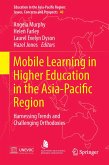On average it takes about 20 years for a child to complete their education in Ghana. Children from wealthy families usually benefit from attending private schools while children who are from poor families attend public schools. Most children in Ghana begin their education at the age of three or four. They first enter nursery school then followed two years in kindergarten. After kindergarten, the child then continues to primary school, junior high school, senior high school and then finally university. Before there were more boys enrolled in schools than girls but with the implementation of equal rights for men and women there are about the same number of boys and girls enrolled in schools in Ghana now. The Republic of Ghana has 12,630 primary schools, 5,450 junior secondary schools, 503 senior secondary schools, 21 training colleges, 18 technical institutions, two diploma-awarding institutions and five universities serving a population of 18 million; this means that most Ghanaians have relatively easy access to good education. In contrast, at the time of independence in 1957, Ghana had only one university and a handful of secondary schools.
Bitte wählen Sie Ihr Anliegen aus.
Rechnungen
Retourenschein anfordern
Bestellstatus
Storno








